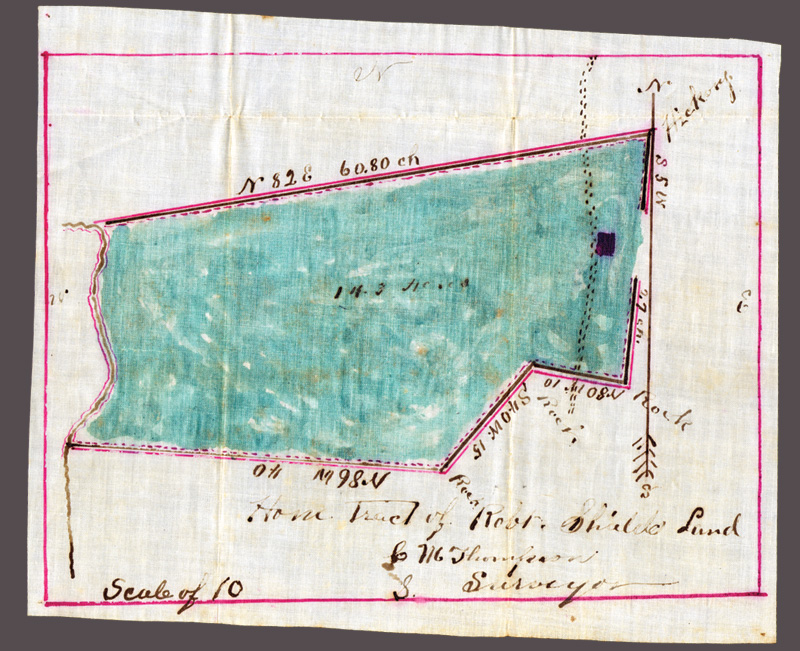
The landscape of the farm in 1938 is recorded in an aerial photograph found in the commissary. At this time there were about 15 tenants most of whom were African Americans, who supplemented what they could earn as croppers by earning wages as farmhands. Joyce Ethridge remembered that hands were paid 75 cents for a day’s work in the 1940s.
Subdivision of the fields follows the lines of soil conservation terraces. The soils on the farm are mostly clay loams and only moderately erodible, but years of cotton cultivation must have meant a significant loss of soil before terraces were constructed. Cotton was grown in the fields beside Ethridge Road and across Martin Creek in the northeastern part of the property. Fields sloping towards the Oconee River and Martin Creek were mainly used for growing corn and wheat, and bottomland was used for hay and pasture. A continuing reliance on mules and human labor for the cultivation and picking of cotton helps to explain the varied sizes and shapes of the fields; there was no need to standardize sizes and shapes to accommodate large machines, instead fields curved and undulated with the topography.
By 1938 about half the farm was covered in trees. Most of the woods would have been the result of natural succession in abandoned fields, but there were also some stands of pine that had been planted to provide timber for the sawmill. Woods were also used for hunting and some provided areas were livestock could browse and graze.
Most of the tenant homes stood close to a road, but a few had to be reached by farm tracks. The sizes of these homes varied, most places having just two or three rooms. All would have had one or more outbuildings plus a well and a privy arranged around a small yard.
The family farm today is very different from that seen in the 1938 aerial photograph: both boundaries and land uses have changed. Today, no land is tilled regularly, a higher percentage of the property is now woodland, and all remaining fields are kept in grass. On the southern boundary of the family farm there are three modern broiler houses for rearing chickens. About half of the tenant places have been abandoned and nearly all those remaining have been modernized and extended. For someone driving down Ethridge Road there is little obvious evidence that this was once a cotton farm; however for visitors who stop to take a closer look there are clues to its past. First and foremost, there is the remarkable collection of buildings at the heart of the historic farm now being preserved by the Shields-Ethridge Heritage Farm Foundation.
And if one takes a walk along Johnson Mill Road, which remains an unpaved and little used rural road, it is possible to spot terraces and tracks in the encroaching woods and the remnants of abandoned tenant places, and thereby begin to reconstruct in the minds-eye the vanished landscape of Mr. Ira’s and Miss Ella’s time.
